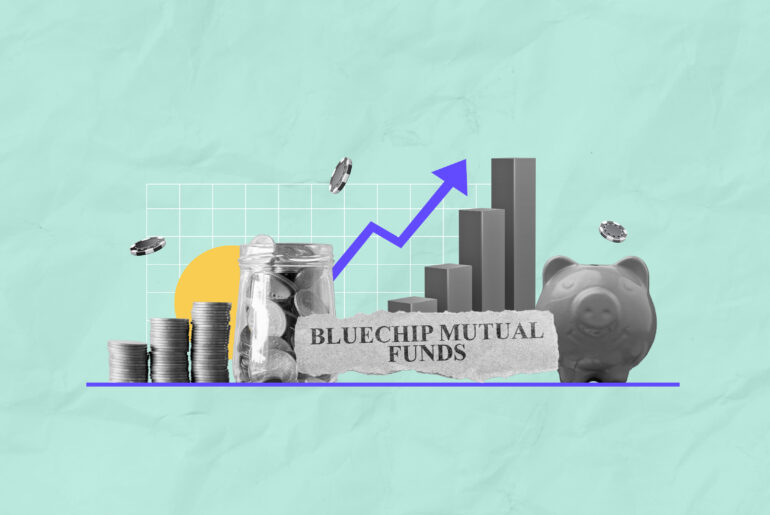Last Updated on Aug 26, 2021 by Aradhana Gotur
Investors who have knowledge related to mutual funds and their benefits keep looking for investment opportunities that can help them generate wealth, get regular payouts, and save taxes. Although numerous investment schemes are available in the market, most of them offer returns that are taxed according to the rules given by the Income Tax Department.
This is where ELSS (Equity Linked Savings Scheme) funds come into the picture. ELSS offers tax benefits under Section 80C of the Income Tax Act, 1961. Before we give you information on the best tax-saving mutual funds, let us read about ELSS and how it works.
This article covers:
What are ELSS funds?
Features of ELSS funds
Why invest in ELSS for tax savings?
Factors to consider before applying for ELSS funds
Top ELSS funds to Invest in 2021
Tips for investment in ELSS funds
Why should you invest via Tickertape?
Table of Contents
What are ELSS funds?
ELSS funds are one of the best tax-saving mutual funds that invest the major portion of the corpus in equity and/or related instruments. ELSS funds are also called tax-saving schemes as they offer tax exemption of up to Rs 1.5 lakh from your annual taxable income under Section 80C of the Income Tax Act.
An ELSS fund can be considered as an equity-oriented scheme with a necessary lock-in period of 3 yrs. It allows an individual or a Hindu Undivided Family (HUF) to deduct the total income by up to Rs 1.5 lakh under Section 80C of the Income Tax Act. Therefore, if you want to invest Rs 50,000 in an ELSS, this amount would be reduced from your total taxable income, thereby lessening your tax burden.
These schemes have a mandatory 3-yr lock-in period from the date of their unit allotment. As soon as the lock-in period ends, the units automatically become free to be redeemed or switched. Moreover, the income you earn through this scheme at the end of the 3 yrs is considered a long-term capital gain; it is taxed at a rate of 10% if the amount is over Rs 1,00,000.
Features of ELSS funds
Let us examine the key features of ELSS funds:
- ELSS funds invest an enormous proportion of their portfolio in equity. A minimum of 80% of the aggregate investible corpus is invested in equity and instruments associated with it. The ELSS funds invest in equity in a varied manner across numerous market topics, capitalizations, and sectors
- There is no primary tenure of investment, but there is a lock-in period of 3 yrs
- ELSS mutual funds do not carry any entry or exit load
- You can enjoy double benefits of capital appreciation like investments in equity and other tax-saving facilities
Why invest in ELSS for tax savings?
ELSS is one of the very few tax-saving investments that gives investors the advantage of the Equity Linked Savings Scheme. ELSS funds give better returns than bank fixed deposits (FD), National Savings Certificate (NSC), provident funds, and various other benefits of ELSS.
Here are a few points that capture the key advantages of investing in ELSS:
- Diversification: Most ELSS funds invest across a distinct group of companies that vary from small cap to large cap from different sectors of the economy. ELSS funds integrate the element of diversification into the investment portfolio
- Easy to invest: ELSS funds are simple to invest in because it has the benefit of tax deductions and gathering wealth over time
- Easy to track: ELSS funds are easily tracked and monitored at any time, that is, 24×7 from the comfort of any place
- Easy to withdraw: ELSS funds can be withdrawn at any time with just a few clicks. The withdrawal does not need any paperwork, and the procedure is simple
- Paperless process: The whole investment cycle in ELSS funds is paperless and hassle-free, thereby making things less complicated
- Low minimum amount: Most ELSS schemes allow you to begin investing with just Rs. 500. This feature ensures that you don’t have to wait to accumulate a significant investible corpus
- SIPs: Although the ELSS scheme allows you to invest a lump sum amount, they can also use the Systematic Investment Plan (SIP) method; this specific method allows you to invest with lesser amounts and avail ELSS tax benefits, thereby affording them opportunities to amass wealth
- Higher returns: ELSS mutual funds carry the potential of offering higher returns over a long period and can easily beat other asset classes, specifically fixed-income investments, by a broad margin over a long duration
- Shortest lock-in period: The lock-in period of ELSS funds is only 3 yrs, which is the shortest among all other tax-saving investment alternatives available. NSC has a lock-in period of 5 yrs, whereas it is 15 yrs for PPF and 5 yrs for ULIPs
Factors to consider before applying for ELSS funds
Apart from looking at the ELSS fund’s performance over the past decade, you should also consider these factors before investing in ELSS:
Investment plus tax planning
Many investors look at ELSS funds only with tax-planning intentions. ELSS mutual funds are the only type of mutual funds that invest in equity markets and offer tax benefits. If your sole objective is to save tax, there are many options available under Section 80C of the Income Tax Act. Hence, before you choose to invest in ELSS, ensure that you create an investment plan to help fulfil your financial expectations. Only then plan your ELSS investment. This plan should consider both, saving for medium- to long-term goals and tax planning.
Do not go overboard with your ELSS purchases
You might want to purchase the most recent and best ELSS funds every year from various asset management companies to save tax. While ELSS helps you amass wealth, having too many ELSS funds can result in over-diversifying your portfolio. Moreover, it can also be challenging to regulate multiple ELSS funds simultaneously.
Market-linked returns don’t provide any guarantee
You should also know that despite its potential for generating increased returns, an ELSS is subject to market risks. Considering the cyclical characteristic of markets, it makes sense to anticipate the temporary rise and fall of equities. So, even if you buy the best ELSS funds according to their past performances, they might not assure you higher returns in the future.
Top ELSS funds to Invest in 2021
In this section, we have discussed the best tax-saving mutual funds to invest in 2021:
Axis Long-term Equity Fund
This fund permits you to invest in quality businesses with a long-term strategy, and it uses a bottom-up approach for stock-picking, which is the approach that primarily concentrates on the evaluation of individual stocks and highlights the importance of macroeconomic processes and market cycles. ELSS funds give the flexibility to invest across different market capitalizations with a basic blend of large caps and select midcaps. Axis Long-term Equity Fund also assures you of reasonable quality, and the growth prospect of long-term earnings can be used for stock selection; the fund makes use of a researched process for its fundamentals.
Invesco India Tax Plan
The Invesco India Tax Plan too invests across market capitalizations and distinct sectors with a long-term viewpoint. It also uses a bottom-up approach for selecting stocks on a growth basis. This plan chooses companies that develop their businesses on a profitable and sustainable basis and are accessible at a logical price. This particular plan uses capitalization bias, sector allocation, and stock selection.
Motilal Oswal Long Term Equity
Motilal Oswal Long Term Equity follows a particular investment style and philosophy based on the principle “Buy Right: Sit Tight.” The term “Buy Right” implies the purchase of quality stocks at a reasonable price. “Sit Tight” refers to remaining invested for a longer time to understand the maximum growth potential. This fund plan also pursues a bottom-up approach for selecting stocks. Moreover, it also uses a benchmark-agnostic strategy to build a portfolio that comprises great conviction stock suggestions and low portfolio churns. Lastly, this fund plan acknowledges unfavourable diversification of funds with fewer stocks.
Aditya Birla Sun Life Tax Relief 96
Aditya Birla Sun Life Tax Relief 96 uses a combination of bottom-up and top-down approaches for selecting stocks. It uses a top-down approach, which is an investment analysis approach that analyzes first the macro factors of the economy, before evaluating the micro factors. This fund plan helps to examine the changing economic trends, macroeconomic factors, and key policy changes, infrastructure spending. The bottom-up approach helps to identify companies with a strong competitive position in promising sectors and with reliable management, concentrating on long-term fundamental growth.
Mirae Asset Tax Saver Funds
This particular fund seeks to build a diversified portfolio of big growth companies at the most modest prices across market capitalizations, investment styles, and themes. Mirae Asset Tax Saver Funds plan uses a bottom-up approach for selecting a stock driven by value and investing in growth-oriented businesses. The investment decisions that need to be taken are established based on a wide-scale analysis of business cycles, macroeconomic trends, and different industry trends.
This fund prefers companies that have high return ratios and robust business models. Additionally, it aims to invest in a huge base of stocks so that concentration risk can be prevented. Lastly, it is one of the best options for investors in 2021 because it regulates the trading volumes of stocks observed before investment to avert any liquidity risk.
Tips for investment in ELSS funds
Here are some tips for investing in ELSS schemes:
- ELSS funds also help to compare the past performance of 3, 5-, and 7-year periods while making a selection of the funds. However, no one can guarantee the past performance of any fund in the future. This step becomes necessary to assess how some funds are held up under varied market conditions
- Instead of waiting to invest in the ELSS funds in the last month of the financial year, choose the SIP option for circulating any investments across the year. Choosing SIP comes with benefits from the average cost during market correlation
- Furthermore, dividends are taxable at the hands of investors according to the choice of their tax slab
- As direct plans have a shorter expense ratio than growth plans, the savings produced remain in the fund itself, producing higher returns for a long time
Why should you invest via Tickertape?
Before deciding to invest in ELSS, you must conduct a basic analysis and thorough market study. Tickertape’s Mutual Fund Pages gives you detailed information about a fund, its performance, and key metrics. Its Tax Calculator also helps you ascertain your approximate tax liability and returns beforehand.
- Best Performing Index Funds in India (2025) - Jun 5, 2025
- Issue of Shares – Meaning, Types, Examples and Steps - Jun 4, 2025
- Banking Mergers in India – List of Merged PSU Banks, Advantages, and Challenges - Jun 3, 2025





